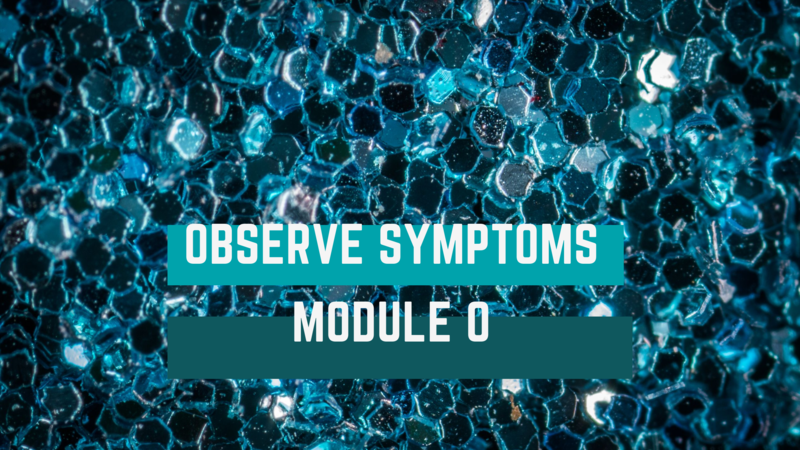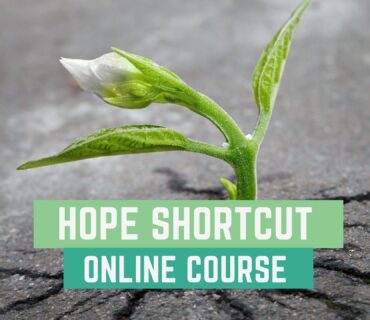Dag 7 Modul O – Observer din stress

Welcome to Module O
Observing your symptoms and emotions in a systematic way
In the menu, you now have access to the Library. Take some time and explore a new world.
If you want to improve your health, you must know the status of your stress, symptoms, or mood.
It is the only way you will know if you improved in the near future:
- Do your symptoms get smaller or bigger?
- Can you notice a 10 % improvement?
- If you don’t write it down, you may not remember how it was before.
- We quickly get used to our reduced symptoms and focus on the symptoms we have left.
A woman I treated for Parkinson’s, in her 7th session, began to complain about her loneliness and that she was missing a boyfriend. She had improved so much that Parkinson’s disease was no longer the most critical problem of her life. She now realized that her Parkinson’s issues were due to stress. Her symptoms are no longer there on a good day, but they still flare up when she is stressed.
The loneliness was probably as devastating as the Parkinson’s symptoms. But now, she is a step further towards having problems similar to people without a diagnosis.
We tend to focus on what is most painful in our lives. When current problems are resolved and you are free of one symptom, then you will use your mental time on other problems in your life, and it is important to notice this shift.
There is a metaphor for this. That the work is like peeling an onion one layer at a time. That means that it might still make you cry, but your problems are actually reduced in number.

Intro to observe your stress (2 minutes)
Why you need to observe your symptoms

Change to a new style of health (12 minutes)
- Why cyclic health is better than linear
- About how you learn new things (with biking as an example)

Why should you observe your symptoms? (10 minutes)
You need a starting point. With that, you can compare it with your situation in 3-6 months

Diary: Video instruction (5 minutes)
Review of the Hope Diary
The download of Diary
- You can åbne den herfra eller her på engelsk the diary from here (denne udgave kan man udfylde på computeren)
- print 14 kopier af side 2.
- Or you can save a copy on you computer with the name “diary template”
- Every day take a copy of the template and fill it out and save with the name of the relevant date
- Fill it out directly in the formular as it is fillable
- You are also free to take notes in a calendar or booklet.

Example of how the diary can be used (3 minutes)
Difficult to understand?
Feel free to email me during the course: liliansjoeberg@gmail.com
I will help you to understand what is not clear.
Eventually, we can have an online meeting so that I can address your problems. Later I will make Zoom calls so you and others can ask me questions on how to understand the problems.
Body scan – Interoception (4 minutes)
How to observe the sensations of your body to check your symptoms and feelings
- Use this video daily until you can do it yourself.
- Sit in a quiet place and listen to your body by following this simple recipe. It is a way to make contact with your body.
- As you shift your attention from one body part to the next, notice how your body feels: is it tense or relaxed?
- What feelings do you have, and where are these feelings situated in your body?
In 2 weeks you will learn to act on these signals from the body.

| xxxxxx | xxxxxx | |
|---|---|---|
| Theory | ||
| xxxxxx | xxxxxx | |
| Physical symptoms and emotional symptoms and feelings are often interrelated, so if you notice both, this is important information | ||
Thoughts: Your thoughts trigger your emotions. Your posture triggers your emotions (and the other way around: What came first, the chicken or the egg?) | ||
Emotions: Emotions change the chemical composition in your body. The chemical composition affects the way your body and organs work. That is why your thoughts are essential. Not everyone is aware of their emotions. A lot of people have access neither to emotions nor signals from the body because they are caught in severe instinct response. Too much adrenaline is running around in their body. They are ready up for fight or flight. | ||
| Priorities: Most people have not learned to make their health a top priority. They have their bodies and health so far down on the priority scale that they do not react to their body sensations. Here we have many ambitious people with an important agenda and busy everyday lives. It can also be busy parents prioritizing children and jobs before themselves. | ||
Beliefs: Beliefs are thoughts by which you measure yourself (or others) against a standard of how your life should be lived. This standard is not “real” but is based on the upbringing, traditions, and influence of friends and community. Examples of beliefs: ¤ You have to change to clean underwear every day ¤ You have to celebrate an anniversary or birthday every year ¤ The baby has to be baptized ¤ There must be decorations on the Christmas tree ¤ You should cut the bread into 10 mm slices ¤ You must listen to your parents Fashion is an excellent example of beliefs: ¤ What kind of wood is just right for modern furniture ¤ What color is in fashion this year ¤ Just look at old photos of yourself through time We are convinced that the way we dress now is better than in the past. We all have thousands of these rules. And it works well as long as everyone lives up to each other’s rules. We all have some different rules. Beliefs can be played in your mind so fast that you cannot hear them. We call them “soundtracks.” You can feel them if your mood changes for no reason. If you look at yourself in the mirror, a person enters the door, and you arrive at a party or other situation that triggers a belief that is too well integrated into your mind. Example: • I’m too fat • I have a big nose • I’m more stupid than other people • What I’m saying is not good enough • I’m guaranteed to be rejected | ||
| xxxxxx | xxxxxx |
| HOMEWORK to do during the week | ||
|---|---|---|
| xxxxxx | xxxxxx | |
| 1. Print out the diary or find a notebook 2. Fill out the diary every day for 14 days 2. Watch the videos below this box Every week when you have the time to dig deeper, go to the library section of this course, watch the videos, and read the articles. If you are in doubt about what to do in the diary you can send me an email at liliansjoeberg@gmail.com | ||
| xxxxxx | xxxxxx |
Must-see videos
All this about Placebo effect is not to turn the back to medication and operations. It is to make you trust yourself and make you cabable to choose what is best for you.
Always consult your doctors.
The Neuroscience Behind the Placebo Effect: https://youtu.be/REaiu-7wRvs
Is there scientific proof we can heal ourselves?: https://youtu.be/LWQfe__fNbs
Did you see them in previous week. If not, now is the time.
These videos can show you that reality may be a little different from what we have learned as children.Here, a doctor talks about how medicine doesn’t always help as we think.
- The Doctor Who Gave Up Drugs: Episode 1 – English documentary – 1 hour
(Question to answer: A woman have some pain and are going to track them after doctors orders, like you do the next 2 weeks. How did her medication affect her pain?) - The Doctor Who Gave Up Drugs: Episode 2 – English documentary – 1 hour
Derren Brown has countless YouTube videos which show hypnosis, mind-reading, memory challenges, and seduction of the spectator.
In addition, he has an incredible ability to reveal what he is doing so that we become wiser about how advertising and fraudsters can manipulate us. He is my favorite entertainment on a rainy day.
Fear And Faith: Here’s how the Placebo effect is used to reduce the fears of 4 people who are taking pills in the belief that it is medicine and not sugar tablets.
Module overview


